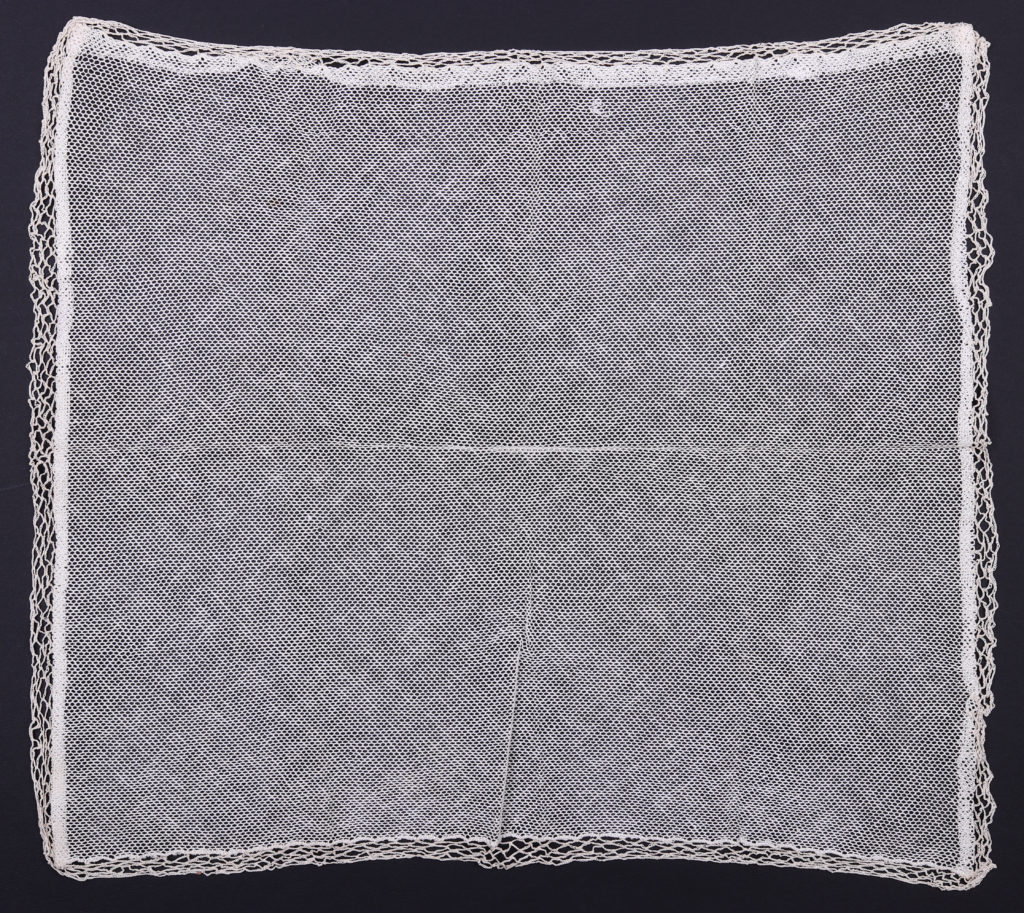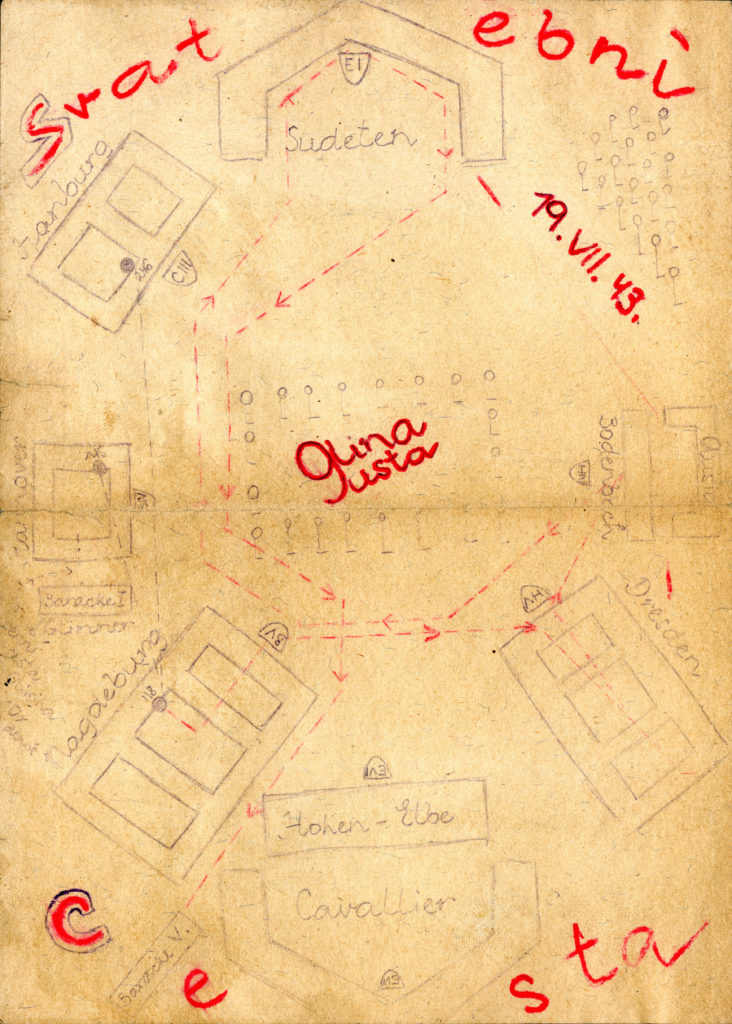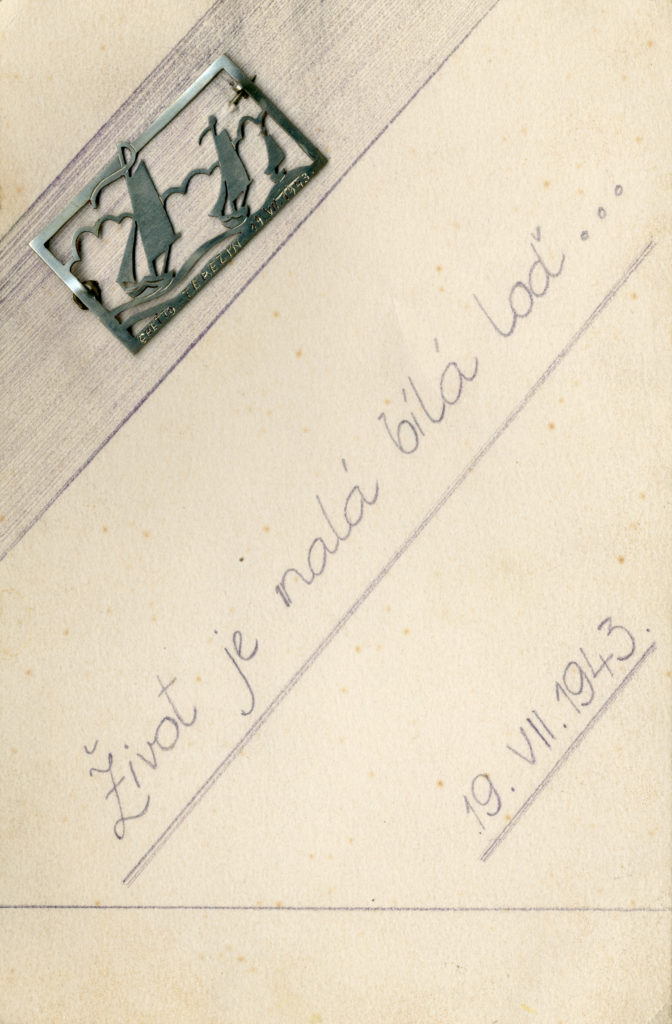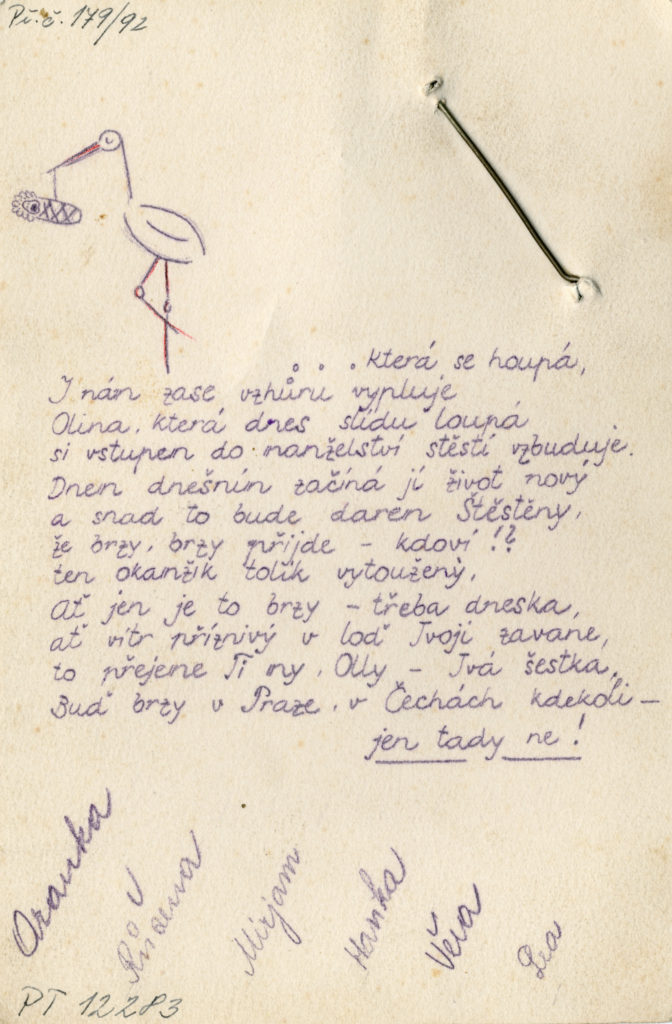(From the collections of the Terezín Memorial)
In addition to many other noteworthy exhibits, the collections of the Terezín Memorial comprise objects relating to a somewhat neglected subject: namely weddings in the Terezín Ghetto. Between 1942 and 1945 several hundred weddings took place in the Ghetto. One of them has been documented to this day by a preserved plan of a wedding journey through the Ghetto, by head covers for the wedding, a decorated brooch and two wedding greeting cards. These objects were obtained by gift from Mrs. Olga Krausová (née Windová) who married her husband Gustav Kraus during their incarceration in Terezín.
Weddings in the Ghetto, just as Jewish divine services, celebrations of feasts and funerals, were tolerated by the SS Command. In fact, many of the future brides and bridegrooms made couples already before their deportation; many others got acquainted after their arrival in the Ghetto. In its harsh conditions, weddings took place not only because of the mutual affection of both partners but also for the purpose of protection. Whenever possible, those inmates regarded as indispensable for the Ghetto operation were protected from being deported by Eastern transports. This kind of immunity also applied to their families; as a result, weddings turned out to be a means of evading or at least deferring inmates´ further deportation. There were two types of wedding ceremonies. Besides a religious ceremony, officiated by a rabbi according to the Jewish traditions, it was also possible to make one´s wedding vows to a Jewish Elder, eventually to another appointed person. It is highly likely that the first wedding in Terezín dated back to March 1942.

Olga Windová
Olga Windová was born to her mother Ida and father Emil on September 23, 1916 at Černovice near Tábor. She had two elder sisters and a younger one. Just as all her siblings, Olga lived in Prague during the occupation. The whole family, except for the father who had died in 1941, was deported to Terezín. Olga came to the Ghetto together with her youngest sister Karla on July 2, 1942 in transport AAl. Living in the Hamburg Barracks, she worked in the ”mica-splitting workshop“ where women would split sheet mica into thinner films prepared for insulating electrical instruments. During the visit to the Ghetto by a delegation of the Commission of the International Red Cross Olga played the role of a happy girl reading a book, and she took part in a similar role in the shooting of a Nazi propaganda documentary.
Olga´s future husband, Gustav Kraus was born on December 19, 1896. No detailed information about his family is available. Before his deportation he lived at Dolní Kralovice in the Benešov district. He was deported to Terezín by transport AAb from Kolín on June 5, 1942. Accommodated in the Hannover Barracks, he also served as its Zimmerältester. Following the wave of transports in the fall of 1944 he worked for Gebäudeleitung (Facility Management) as a Gruppenleiter.
Olga´s Wedding in the Ghetto
According to Olga Krausová´s own recollections, Olga and Gustav knew each other before arriving in the Ghetto. There is no information about the actual start of their relationship; yet, in spite of the age difference between the two, their bond was so firm that they decided to be joined in matrimony. The ceremony took place on July 19, 1943 in an attic of the Magdeburg Barracks where they were married by a rabbi from the town of Pacov. Olga was wearing a black dress, her head was covered by a crochet veil made by her mother. Originally, the wedding ceremony was to have been accompanied by singing and piano playing but the invited musicians had not been given permission to leave from work. Still, the wedding was attended by Olga´s friends who were free that day. The newly married couple received two wedding greeting cards and a decorated brooch. The other wedding gifts mentioned by the bride – a tray and majolica saucers – probably had not been preserved.
The whole wedding ceremony was concluded with a journey through the Ghetto according to a well-prepared plan. The bride and the bridegroom first went to the Dresden Barracks, followed by the Bodenbach Barracks, the Sudeten Barracks and then to one of the so-called Southern Barracks where their wedding journey ended. The plan of the journey definitely ranks among the remarkable exhibits documenting how weddings in Terezín also took place.

Most likely due to their labor deployment, Olga and Gustav Kraus succeeded in evading all the transports to the East and both lived to see the liberation of the Ghetto in 1945.
Michael Michner




